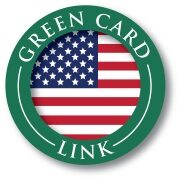Tennis is a fast-paced sport that requires speed, agility, and precision. But what truly supports a player’s performance from the ground up is the tennis court flooring. Whether you’re setting up a court for a school, sports academy, club, or your own backyard, choosing the right flooring ensures longevity, safety, and consistent play.
This article walks you through everything you need to know about tennis flooring—including popular materials, benefits, installation process, and expert tips.
Why Tennis Flooring Matters
The flooring surface directly impacts:
- Ball bounce consistency
- Grip and traction
- Player movement and injury prevention
- Weather resistance and long-term durability
With a well-constructed tennis floor, both amateur and professional players can enjoy smooth, injury-free games on a reliable surface.
Top Types of Tennis Flooring
✅ 1. Acrylic Flooring
Acrylic flooring is one of the most popular choices for both residential and commercial outdoor tennis courts.
- Surface Type: Hard court
- Key Benefits:
- Slip-resistant and UV-stable
- Affordable and easy to maintain
- Ideal for all weather conditions
- ITF Court Pace Rating: Medium to Fast
✅ 2. Synthetic Cushion Flooring
Designed for enhanced comfort and joint protection, synthetic cushioned systems offer multi-layer protection under the topcoat.
- Surface Type: Medium-paced cushioned court
- Key Benefits:
- Reduces fatigue and injuries
- Suitable for intensive training and tournaments
- Long lifespan with minimal maintenance
✅ 3. Artificial Turf (Grass)
Artificial turf offers a unique playing feel, closely mimicking natural grass courts.
- Surface Type: Soft surface with moderate ball bounce
- Key Benefits:
- Great for recreational use
- Quick drainage and good aesthetics
- Low maintenance compared to real grass
✅ 4. Clay Court
A traditional favorite, clay courts are known for slower ball speed and strategic play.
- Surface Type: Natural granular material
- Key Benefits:
- Encourages long rallies and baseline play
- Easy on the joints
- Requires regular maintenance and rolling
Key Features to Look For
- Shock Absorption: Reduces strain on players’ joints
- Traction & Grip: Prevents slipping and enhances footwork
- Weather Resistance: Especially critical for outdoor installations
- Surface Speed: Can be customized from slow to fast pace
- Color Customization: Choose from various shades like green, blue, and red
Ideal Locations for Tennis Flooring
- 🎾 Tennis Academies
- 🏫 Schools & Universities
- 🏢 Residential Societies
- 🏟️ Sports Clubs & Stadiums
- 🏠 Private Villas or Farmhouses
Tennis Flooring Installation Process
- Site Inspection & Base Construction
- Leveling and creating a solid base (usually concrete or asphalt)
- Surface Application
- Depending on the chosen material, several coating or layering steps are involved
- Line Markings & Finishing
- Final markings using high-quality paint
- Anti-skid coatings for safety
- Curing Time
- Allowing the floor to set and stabilize before play
Estimated Cost (India)
| Type of Tennis Flooring | Approximate Cost/Sq. Ft. |
|---|---|
| Acrylic Flooring | ₹60 – ₹120 |
| Synthetic Cushion System | ₹180 – ₹300 |
| Artificial Grass | ₹150 – ₹250 |
| Clay Court | ₹120 – ₹200 |
Pricing may vary based on site location, size, and customization.
Maintenance Tips
- Clean the court regularly using soft brushes or blowers
- Avoid waterlogging by ensuring good drainage
- Repaint markings and topcoat every 3–4 years
- Inspect for cracks or uneven patches after monsoon or heavy usage
Conclusion
Tennis flooring is not just a surface—it’s the foundation of the sport. The right court ensures performance, safety, and enjoyment for years to come. Whether you opt for a hard acrylic court or a cushioned synthetic one, investing in professional tennis flooring is a smart move for any facility or home.




